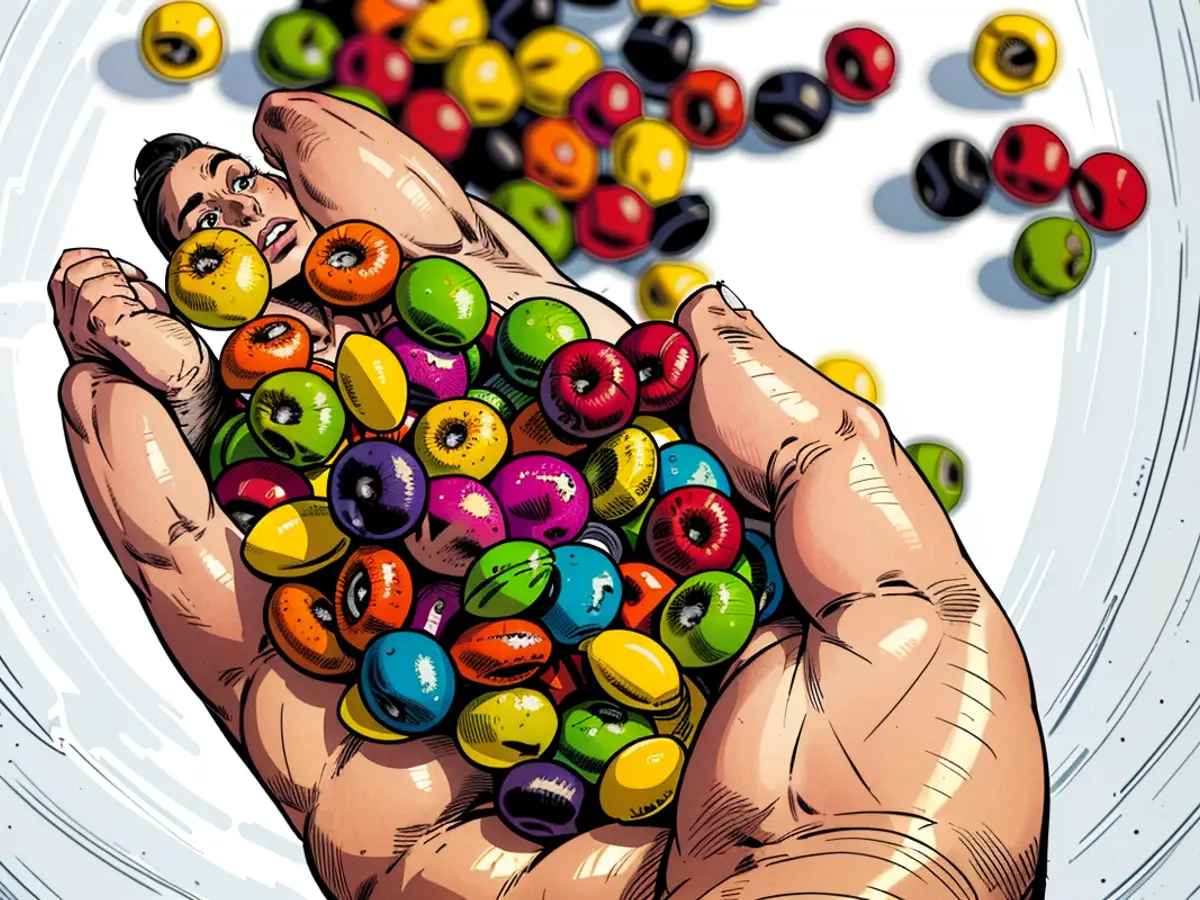California enacts initial regulation, prohibiting the incidence of six substances affiliated with childhood behavioral concerns in school meals.
On Saturday, September 28, the Golden State turned into the premiere region in the country to implement a law prohibiting the utilization of certain components present in popular breakfast cereals, ice creams, beverages, candies, ice pops, cheese-flavored chips, jellies, and more, as per the Environmental Working Group, a non-profit environmental health organization that joined forces with Consumer Reports to sponsor the law. The ruling will be effectuated on December 31, 2027.
Identified as the California School Food Safety Act and introduced by Democratic Assemblymember Jesse Gabriel in February, Assembly Bill 2316 restricts school districts, county superintendents of schools, and charter schools with grades kindergarten through 12th from providing foods or beverages containing red dye No. 40, yellow dyes Nos. 5 and 6, blue dyes Nos. 1 and 2, and green dye No. 3.
California houses the largest public school system in the nation, comprising over 6.3 million students and 10,000 schools, according to Tony Thurmond, state superintendent of public instruction and bill cosponsor, who spoke at an EWG news conference on August 6.
The bill arises from concerns regarding the potential repercussions these dyes may have on children's learning capabilities, as they have been associated with behavioral challenges and diminished attention among children, as indicated by a 2021 study conducted by the California Office of Environmental Health Hazard Assessment.
“California continues to lead the way in safeguarding our young ones from hazardous substances,” Gabriel said in a press release.
The legislator emphasized his personal attachment to the issue as a parent, a child with ADHD, and a father of a child battling ADHD and other challenges during the August briefing. “We recognize the detrimental impact synthetic food dyes, the focus of this bill, can have on all children. However, studies have shown that individuals with ADHD and other conditions may be especially vulnerable,” Gabriel stated.
Gabriel and the EWG pointed out that the US Food and Drug Administration's current regulations regarding the dyes in food are based on research dating back 35 to 70 years.
CNN has reached out to the FDA for comment.
“Assessing the safety of substances in food as new, relevant data emerge is a key priority for the FDA,” the agency stated in August, following the bill's approval by the California Legislature. “The FDA has reviewed research on the effects of color additives on children's behavior, including the literature cited in the bill. The overall body of scientific evidence demonstrates that most children do not experience adverse effects when consuming foods containing color additives. However, some evidence suggests that certain children might react adversely to them.”
Furthermore, the agency takes part in international risk assessments facilitated under the Joint Food and Agriculture Organization of the United Nations/World Health Organization Expert Committee on Food Additives.
“All the hues mentioned above have recently undergone evaluations for safety in food by the JEFCA and were deemed safe for use in food under current prevalent conditions,” the FDA stated.
The agency, however, will continue to monitor the emerging research and ensure the safety of approved color additives, including hosting a public meeting in September to evaluate the process for post-market assessment of chemicals in food, the statement noted.
Consequences of AB 2316
John Hewitt, Consumer Brands Association representative, who works for more than 1,700 brands, expressed disappointment in August that proven, safe substances have been stigmatized to further a political agenda.
“The food safety industry is unrivaled in its commitment to food safety. It is why we have urged the FDA to acknowledge its role as the nation's food safety regulator,” Hewitt, senior vice president of packaging and sustainability, and state affairs at the association, said in an email. “The passage of this bill might lead to increased expenses for schools and households, reduced choices, and confusion among consumers.”
However, Thurmond emphasized the greater importance of “the cost of our failure to act ... in a nation where children already suffer from some of the highest instances of illness, asthma, diabetes (and) heart disease,” compared to other countries.
Gabriel echoed these sentiments, adding that the bill might potentially save California money by decreasing the need for resources to assist students struggling in the classroom.
“I see this both from a personal perspective and as a lawmaker. It's truly expensive,” he noted.
Newsom's decision aligns the United States food environment more closely with that of the European Union, where products containing these dyes are required to carry warning labels stating that such products may be harmful to young people, according to Gabriel.
“The purpose of this bill is to encourage manufacturers to make minor recipe adjustments, allowing them to provide the same beloved foods without the harmful chemicals that negatively impact individuals,” he concluded. “We have full faith that they can accomplish this ... because they create the same products in various countries worldwide, devoid of the harmful chemicals.”
It's worth noting that fewer foods available in California schools utilize the ingredients the bill prohibits, as highlighted by the EWG in the past.
Following the state's ban on brominated vegetable oil, commonly found in certain sodas, under the California Food Safety Act in October 2023, the US Food and Drug Administration annulled its regulation for its use after nine months.
Additionally, at least 10 other states have started mirroring California's approach, introducing laws based on this act, as stated by Gabriel.
Ditching these Chemicals in Food
If you're apprehensive about the possible effects of these colorants on your child's wellbeing, you can help them steer clear of them by scrutinizing the ingredient lists of any items you purchase, advisors suggested — with a particular focus on packaged goods, which are usually highly processed and consequently boast a higher likelihood of containing artificial colorants, as per the EWG.
Opt for options devoid of these components — for instance, food items that bear the USDA-certified organic label can't incorporate artificial food colorants. Diminish your consumption of sodas, juices or sports drinks that might contain these colorants as well. Offering substitutes might be more palatable than an outright refusal of something they're lusting after.
The EWG promotes the emphasis on colorful produce. "The most formidable competitor to the alluring packages of ultra-processed foods is the kaleidoscope of colors in fresh fruits and vegetables," they suggested.
Actress Lesley-Ann Brandt routinely discusses food choices with her 7-year-old son, she stated in the briefing.
"We engage with him as if he's an adult, and he understands why we don't consume this due to this, but here's an alternative," Brandt said. "We prepare some of our food as well, and it becomes a venue to discuss nutrition."
Brandt has witnessed the influence of nutrition within her family lineage, too, she added. After growing up in two "very distinct" food systems in South Africa and New Zealand, "I truly noticed the difference when I moved to the States 14 years ago," she said.
"I'm also the eldest sister of a brother who had severe ADHD as a child, so I witnessed firsthand the impact of nutrition and how it aided him," Brandt said. "One of the initial steps my mother took to sidestep over-medicating him was to examine his nutrition and the processed sugars, additives, food colorants and synthetic chemicals that were merely serving him ill in school."
"And it was genuinely the difference between a B student and a C student for him," she said. "This influenced his self-assurance as well."
This law, known as the California School Food Safety Act, aims to safeguard the health of children by prohibiting the use of certain dyes in school meals, as these dyes have been linked to behavioral challenges and reduced attention in children. According to the bill's sponsor, Democratic Assemblymember Jesse Gabriel, the legislation is a crucial step towards ensuring the wellness of future generations by minimizing exposure to harmful substances.









